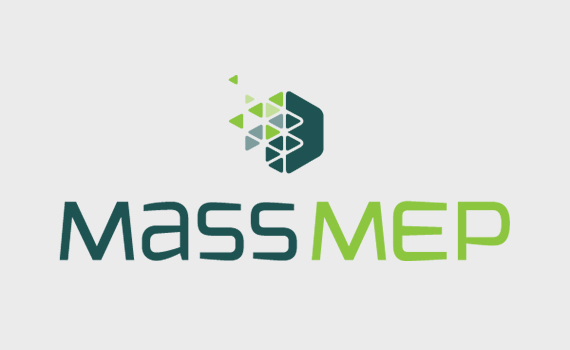MEP Program Shows Nearly 13.6 to 1 Return to the Federal Treasury
Share Article
The American Small Manufacturers Coalition announces a new study by Summit Consulting and the W.E. Upjohn Institute for Employment Research finds that the National Institute of Standards and Technology’s (NIST) Hollings Manufacturing Extension Partnership (MEP) program generates a substantial economic and financial return. The study found a return on investment of nearly $13.6:1 for the $146 million invested by the federal government.
Chuck Spangler, ASMC Board Chairman
“Another year with extraordinary results! MEP Centers across the country are undoubtedly fulfilling their duties in helping small and medium-sized manufacturers create competitive futures by empowering them to excel,”
WASHINGTON (PRWEB) FEBRUARY 08, 2021
The MEP program is a federal public-private partnership created in 1988 that provides small and medium-sized manufacturers (SMMs) technology-based services these firms need to grow and thrive in today’s economy and create well-paying manufacturing jobs. The MEP program is managed by NIST and the U.S. Department of Commerce and is implemented through a network of 51 MEP Centers located in every state and Puerto Rico. These MEP Centers are not-for-profit organizations that employ a network of more than 1,400 trusted advisors and experts who work directly with manufacturers to improve productivity and enhance U.S. competitiveness.
Using the national REMI® model, along with the results from the fiscal year (FY) 2020 NIST MEP client impact survey conducted by Fors Marsh, LLC., the team finds that economic returns remain robust. The study uses a conservative approach in estimating the broader economic impacts of the program by examining the competitive interactions between firms. NIST MEP contracted with Summit and Upjohn to create a study to estimate the broader national impacts of the MEP program. The results of the study are available here.
Navigating the challenges of 2020
The entire country, including the hundreds of thousands of small and medium-sized manufacturers along with MEP Centers across the U.S., faced enormous challenges and economic headwinds as a result of the COVID-19 pandemic and the resulting economic dislocation. Despite these obstacles, manufacturers proved to be resilient and MEP Centers continued to deliver a consistent and significant return on investment to the nation. Additionally, MEP Centers engaged manufacturers to pivot and address shortages in personal protective equipment (PPE) early in the pandemic. MEP anticipates a similar response associated with efforts surrounding vaccinations.
A positive return on investment
The study reports that the $146 million invested in MEP during FY 2020 generated nearly a 13.6:1 increase in federal personal income tax ($1.99 billion/$146 million federal investment). The study only looks at personal income tax and not business taxes. In addition, the analysis provides a conservative estimate of broader impacts as they are based only on completed surveys.
The MEP program generates additional jobs for the U.S.
The study finds that total employment in the U.S. is more than 252,000 higher because of MEP Center projects. This estimate includes both direct jobs generated by MEP projects as well as jobs generated among suppliers and households. This supports both additional manufacturing jobs critical to U.S. supply chains and jobs outside the manufacturing sector.
Other positive impacts of the MEP program
The study examines additional areas of economic impact generated by the MEP program. It finds personal income is $15.5 billion higher and gross domestic product is $20.9 billion larger. This translates into an increase of $1.99 billion in personal income tax revenue to the federal government.
“Another year with extraordinary results! MEP Centers across the country are undoubtedly fulfilling their duties in helping small and medium-sized manufacturers create competitive futures by empowering them to excel,” said Chuck Spangler, board chair of the American Small Manufacturers Coalition and President of the South Carolina Manufacturing Extension Partnership. Coalition. “As highlighted on this report, the impacts these organizations are contributing and the benefits to our economy are not just impressive — they are imperative to the sustainability of manufacturing.”
About Summit Consulting
Summit Consulting is a quantitative and management consulting firm that works with public and commercial clients to turn data into actionable intelligence. Summit’s core mission is to deliver data-driven solutions to help make governments more effective and society more just. Summit’s partners, directors, and subject matter experts lead teams in five core areas: federal credit and risk analytics, health and employment, litigation analytics, mortgage finance, and program management and business modernization. Summit develops readily deployable solutions to support quantitative risk management, process automation, and data analytics. Summit couples core expertise with a methodology to derive sound, transparent and reproducible results. Click here for more information about Summit Consulting.
About the W.E. Upjohn Institute for Employment Research
The W.E. Upjohn Institute for Employment Research was created in 1945 from the W.E. Upjohn Unemployment Trustee Corporation, established in 1932 to address issues of unemployment during the Great Depression. The Upjohn Institute is a private, nonprofit, nonpartisan, independent research organization devoted to investigating the causes and effects of unemployment, identifying feasible methods of insuring against unemployment, and devising ways of alleviating the distress and hardship caused by unemployment. Upjohn’s broad objectives are to (1) link scholarship and experimentation with issues of public and private employment and unemployment policy; (2) bring new knowledge to the attention of policymakers and decision-makers; and (3) make knowledge and scholarship relevant and useful in their applications to the solutions of employment and unemployment problems. More information is available at the Upjohn Institute website.
The full report can be found here.




